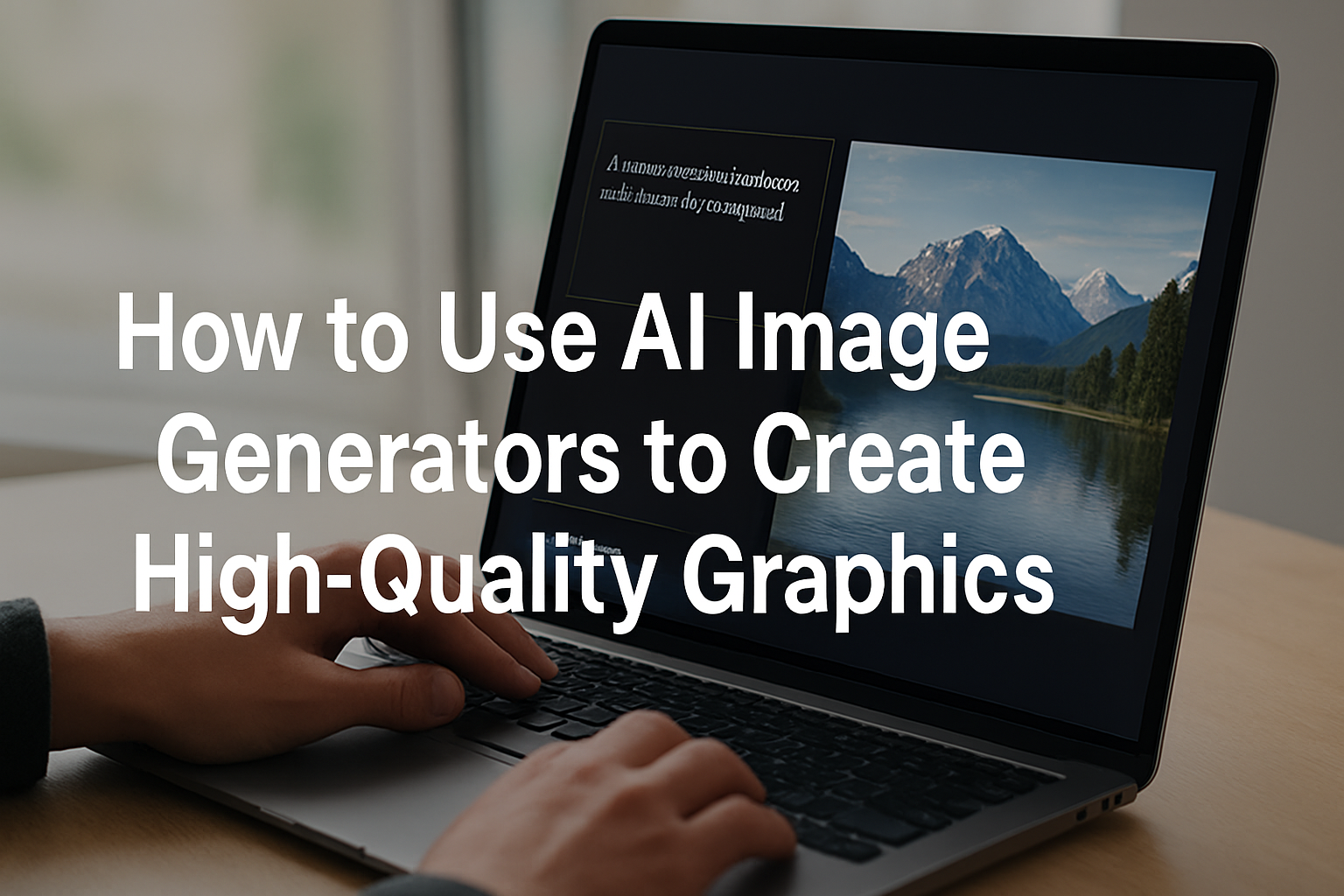How to Use AI Image Generators to Create High-Quality Graphics

AI image generators have revolutionized the way we create visuals, making it easier than ever to produce stunning graphics—even without expert design skills. Whether for marketing, content creation, social media, or personal projects, AI-powered image generation tools enable you to craft beautiful and unique images from simple text prompts or existing photos.
This blog post will guide beginners and enthusiasts alike through the steps to use an AI image generator effectively, ensuring you get the best quality results.
What Are AI Image Generators?
AI image generators are advanced software programs that use machine learning models to create images automatically. They usually work by interpreting text descriptions (prompts) given by the user and generating visuals that match those prompts. These models are trained on enormous datasets of images and texts, allowing them to understand patterns, styles, colors, and objects.
How to Use AI Image Generators to Create High-Quality Graphics
Step 1: Choose the Right AI Image Generator Tool
Choosing the best AI image generators is important for making great images easily. Look for a tool that is simple to use and fits your skill level. It should create high-quality, clear images and allow basic customization like size and style.
A good AI image generator will understand your descriptions well and offer useful features like editing or upscaling. Also, consider pricing and how often you plan to use it.
By picking the right AI image generator for your needs, you can get better results faster and enjoy the creative process more.
Step 2: Understand How to Write Effective Prompts
The quality of images generated depends heavily on the prompt you provide. Think of the prompt as instructions to the AI. The clearer and more detailed your description, the better the AI can produce your desired image.
Tips for crafting good prompts include:
-
Start with the main subject or concept (e.g., "a futuristic city skyline at sunset").
-
Add descriptive adjectives (e.g., "vibrant," "photorealistic," "cyberpunk style").
-
Include style or artist influences if you want a particular look (e.g., "in the style of Studio Ghibli").
-
Specify composition details like lighting, colors, angle, or mood.
-
Keep prompts concise but detailed enough to avoid vague results.
You can experiment with variations to see which prompts give the best outputs.
Step 3: Use the AI Tool’s Features and Settings
Most AI generators provide options to fine-tune the image generation process:
-
Choose image resolution: Higher resolution means better quality but might consume more credits or time.
-
Select aspect ratio: E.g., square (1:1), portrait (9:16), or landscape (16:9) depending on your use case.
-
Pick different AI models or styles: Some platforms offer multiple models optimized for art, realism, or specific effects.
-
Number of images per generation: Generate multiple images at once to pick the best one.
-
Seed and randomness controls: To reproduce or vary generated images.
Learn to use these features to get consistent high-quality images customized to your needs.
Step 4: Generate Your Images and Select the Best
Enter your prompt and launch the image generation. The AI will typically provide several images in a few seconds or minutes. Review the results, and download your favorites.
If the images are not quite right, try refining your prompts or adjusting tool settings. Some platforms also allow you to upscale images to improve quality or edit generated visuals for personalization.
Step 5: Post-Process and Use Your AI Images
Once you have your AI-generated images, you can use them as-is or enhance them further using photo editing software. Post-processing can include:
-
Cropping or resizing
-
Color correction or filters
-
Adding text or graphics for branding
-
Combining multiple images into collages or layouts
For marketing or publishing, optimize your image filenames and alt-text for SEO and accessibility.
Best Practices for Quality AI Image Generation
-
Be specific with prompts to avoid generic results.
-
Experiment with different tools and models to find which suits your style.
-
Use clear, descriptive language and avoid ambiguous terms.
-
Review platform usage policies to respect copyright and content guidelines.
-
Keep track of your favorite prompts for future reuse.
-
Combine AI generation with manual editing for professional polish.
Conclusion
AI image generators provide a powerful new way to create high-quality graphics quickly and affordably. By choosing the right tool, mastering prompt writing, and leveraging features like resolution and style selection, anyone can generate stunning images tailored to their creative needs. Whether you are a content creator, marketer, or hobbyist, these AI tools empower you to bring your visual ideas to life with ease.
Start exploring AI image generators today and unlock a new world of creative possibilities!
This post aimed to provide an easy-to-understand, practical guide to using AI image generators in 2025, helping beginners create impressive graphics with confidence. For more tutorials and tips, keep following AI and digital creativity blogs.





